In this post we will be sharing how to forage 10 herbal remedies from your yard. Believe it or not, your backyard is absolutely full of medicinal plants, available right at your fingertips. All it takes is a little time to slow down and get a closer look at the beautiful creation right under your feet. There are very few things more healing to the body and soul than getting into nature and using the gift of God’s bountiful provisions for us. So let’s get foraging!
My History with Foraging and Herbalism
When I was young, I home schooled. This offered me the opportunity to pick some of my science classes, and I chose botany. I had a rather wistful desire to learn about herbs, so that I could heal myself and others through the power of plants. It was not much of a stretch for me, as my mother had been dabbling in herbalism since the 1980’s.
The world of plants is fascinating, but what really intrigues me are the common herbs (or weeds) that grow in your yard, driveway, and ditch. It is stupendous to think we have a whole pharmacy just outside in our yards.
A Passion for Foraging Reawakened
Life happens and I lost sight of all those classes and traipsing about the yard, meadows, and woods for herbs. But God is beginning to bring back my love for wild things. I recently started foraging around the yard and woods again. Kate Humbles’s show “Back To the Land” is a huge inspiration to me as well. Kate and her friend forage for herbs every episode to make teas and tonics. Shaye Elliot (from The Elliot Homestead) and her husband forage in their garden to make summer tea blends. Spring is reawakening my heart with all its beauty and possibilities for foraging for flowers and herbs. My mind has been racing thinking of all the lovely things that we can make from what’s coming up in the garden and fence row.
I encourage you to go out and take a look around. Get a good book from the library, or order one from Thriftbooks, that helps you identify common plants in your area. Start picking some herbs and flowers to make your very own teas, infusions, tinctures, and tonics. You might even get really ambitious and start drying them for winter.
We need to learn to appreciate what God is giving to us all of the time for free, just for the taking. There is something so healing about being outside, and being amongst the flowers and herbs and grasses. It will help you remember your childhood when all was new and bright and beautiful! Let God’s creation be a part of your healing this Spring! Happy foraging!
What is Foraging?
Foraging is a way of searching for wild foods or herbs on land that is uncultivated for specific crops. Many traditional and rural people still forage along roadsides, ditches, and meadows for wild herbs, asparagus, greens, and wild fruit to make traditional recipes, and herbal medicines.
Recently, foraging is becoming trendy again, as people are more and more interested and in-tune with the environment. More of us want to get to know and understand the creation that is all around us. We want to discover it, enjoy it, and learn how we can be healed and nourished by it.
This post contains affiliate links. As an Amazon Associate we earn from qualifying purchases. When you click on our affiliate links and make any purchase, we will make a small commission at no extra cost to you. To read our full affiliate disclosure click here.
What is Herbalism?
In today’s world, Herbalism is usually thought of as alternative medicine. In truth, up until the first World War, it was the only medicine available to most peoples. Herbalism is the study of, or the practice of, using plants medicinally. The form of herbalism as we know it in the West has a rich tradition from the Greeks through Hippocrates and Galen.
In the Islamic world, Avicenna was a great historical practitioner of herbalism. From the far East, Ayurveda was, and still is, a form of herbalism that encompasses all parts of life.
The Chinese culture has a rich history of practicing herbal medicine. I can personally vouch for the healing power of Chinese herbalism with its many powerful herbal remedies and healing techniques. Check out our post on a frugal approach to holistic healthcare to see how we have implemented herbalism into our health and wellness.
How to Forage 10 Herbal Remedies from Your Yard
10 Plants to Forage in North America
Violet
Historically in Western medicine, violet was used to treat coughs associated with bronchial issues and respiratory congestion. They are also a useful treatment for skin issues. Violet can be used to treat rheumatism, urinary tract infections, and in the treatment of cancer. In Chinese medicine, the violet is used as a whole plant for skin issues of all kinds. It is also used in the treatment of lymphatic issues, and to treat breast abscesses. With their vibrant color, these little purple beauties are easy to spot in your backyard in late April and early May.
Nettles
Nettle plants have the ability to take up large amounts of minerals from the soil through their roots. It specifically takes in large amounts of iron, which makes it a good remedy to treat anemia. The leaves of nettles are high in vitamin C which makes it a perfect combination for the body to assimilate the iron. Nettles clear the body of uric acid which helps to deal with gout and arthritis. It is widely used as a spring tonic. A word of caution; with tiny stinging hairs, nettles are extremely irritating to the skin. Be sure to wear gloves when foraging and handling nettles!
Ground Ivy
Ground ivy is used as a simple remedy for congestion of the lungs and the sinuses. It can be used specifically for infection or mucus build up around the middle ear causing tinnitus. As a person that has personally dealt with tinnitus, I can attest to its effectiveness! Ground ivy is considered a drying herb so it is very useful in the treatment of diarrhea, hemorrhoids, cystitis. Historically ground ivy was also used for the preservation of beer before hops were used. With a unique scent and tiny, beautiful lavender blooms, this little plant can be easily found in late April and May.
Dandelion
In Chinese medicine the whole dandelion plant is regularly used as a diuretic and liver tonic. Chinese medicine sees dandelions as an herb that is cooling. It has the ability to clear heat and toxins from the blood. Dandelion is readily employed as a treatment for boils and abscesses. In Western medicine, herbalists mostly use the dandelion root as an over-all liver cleanse. Dandelion is used to treat gallstones, jaundice, constipation, chronic toxicity of the body, inflamed joints, eczema, and acne. It’s also worth noting that dandelions are bees first food in the springtime! Who knew such a common (and often unappreciated…or hated) plant could be so powerful? Hooray for dandelions!
Plantain
Yarrow
Yarrow is traditionally used to eradicate phlegm from the system. It is also helpful in increasing bile flow from the liver. The aerial parts of the yarrow plant are used for high blood pressure. There is a caution with yarrow; avoid this herb while pregnant! Yarrow stimulates the uterus. The beautiful, fern-like fronds of the yarrow plant can’t be missed. They should appear in your yard, tree line, or woods in the early spring.
Chickweed
Chickweed in European herbalism is mainly used for skin issues, and a cleansing tonic. In Chinese medicine it is used to cool the body in cases of fever. It is also used as a remedy for heavy bleeding during a woman’s cycle and for nose bleeds. Chickweed grows very low to the ground and spreads out horizontally. It has a thicker, brownish stem, and cute little white flowers.
Cleavers
Cleavers are used as a tonic for the lymphatic system and as a simple diuretic. This wild herb is also a great blood purifier. They are also used as a simple, cleansing spring tonic. Cleavers are also commonly known as “Goose Grass”. These chartreuse plants creep low to the ground, and have a very fine sticky/prickly texture to the touch.
Russian Olive flowers
Bush Honeysuckle flowers
Honeysuckle flowers are often gathered to make a simple syrup for cocktails. This fragrant flower is used as a remedy for bad coughs, asthma, and as a simple diuretic. The scent of honeysuckle is so delicious! Its delicate white flowers, with a touch of pink at the base, are easy to spot each spring.
Herbalism References and Book Suggestions
Book references and resources:
The books I used to do my research and identification are “The Complete Medicinal Herbal” by Penelope Ody and “The Complete Illustrated Holistic Herbal” by David Hoffman. I highly recommend both of these wonderful resources!
How to Forage 10 Herbal Remedies from Your Yard: A Spring Tonic Recipe
What you’ll need
- A tea pot with a loose-leaf tea holder, or tea a ball
- Some boiling water
- A pretty tea cup
Foraged Herbs for the Spring Tonic
3-4 dandelion flowers
10-12 violet flowers
4-5 violet leaves
7-10 ground ivy flowers
8 Russian Olive flowers
7-10 Bush Honeysuckle flowers
2-3 Cups of boiling water
Directions
First, place all of your foraged herbs into the loose-leaf tea holder or tea ball. Next, place the tea ball into a tea pot. Pour boiling water over the tea ball. Allow the tonic to steep for 5 minutes or so. Finally, pour the tonic into a pretty cup and enjoy!
This recipe will make about 4 tea cups of tonic.
Foraged Spring Tonic Variations
Though we think the spring tonic we made above is tasty and refreshing, it may not be as flavorful or sweet as you would prefer. Remember, this is medicinal! If you would prefer a bit more flavor in your tonic, simply add some peppermint, raspberry, or chamomile tea to the mixture. You can also add a bit of local honey or stevia for some sweetness!

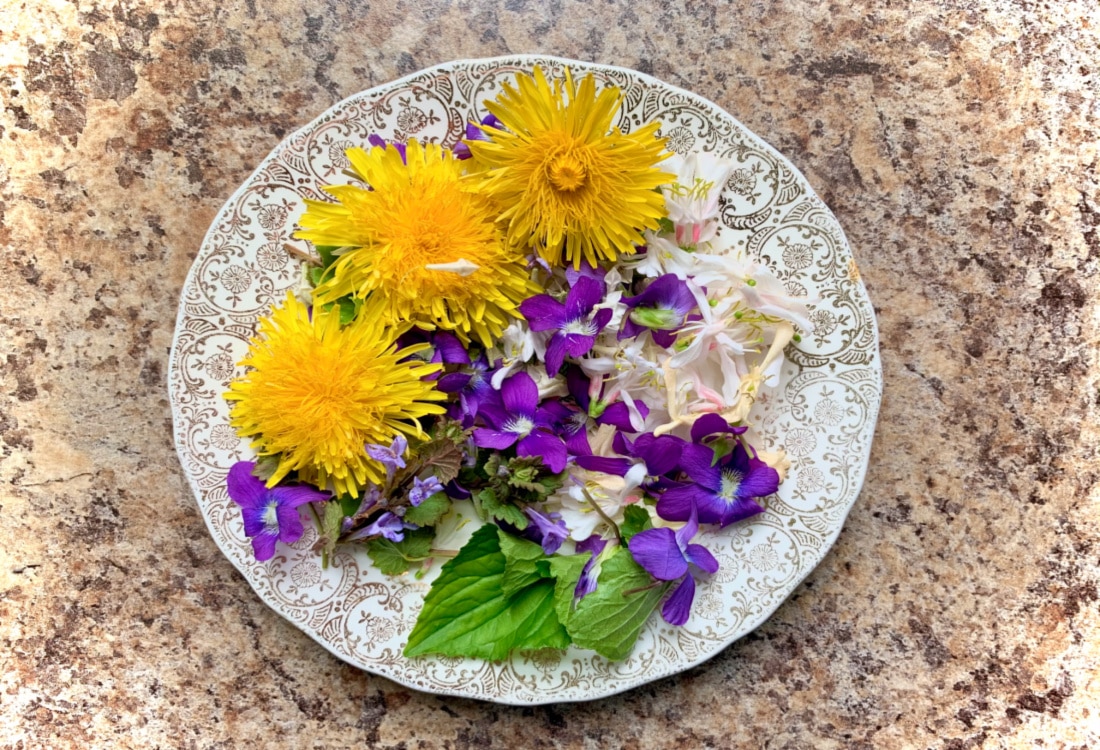
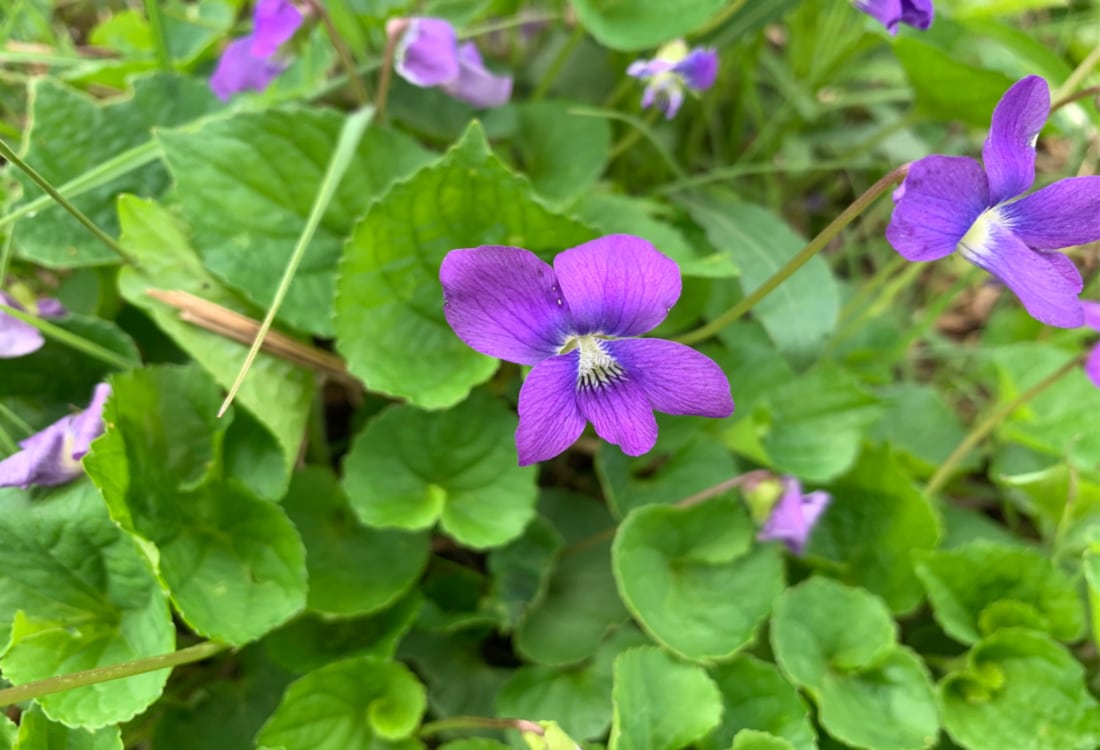
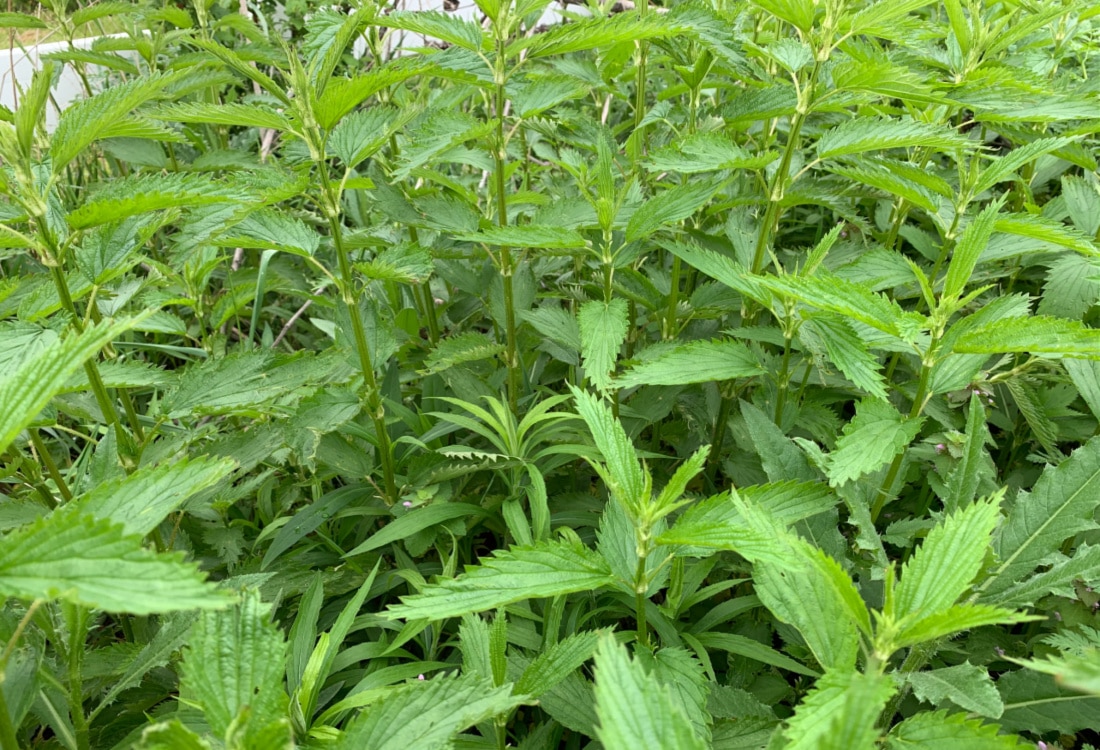
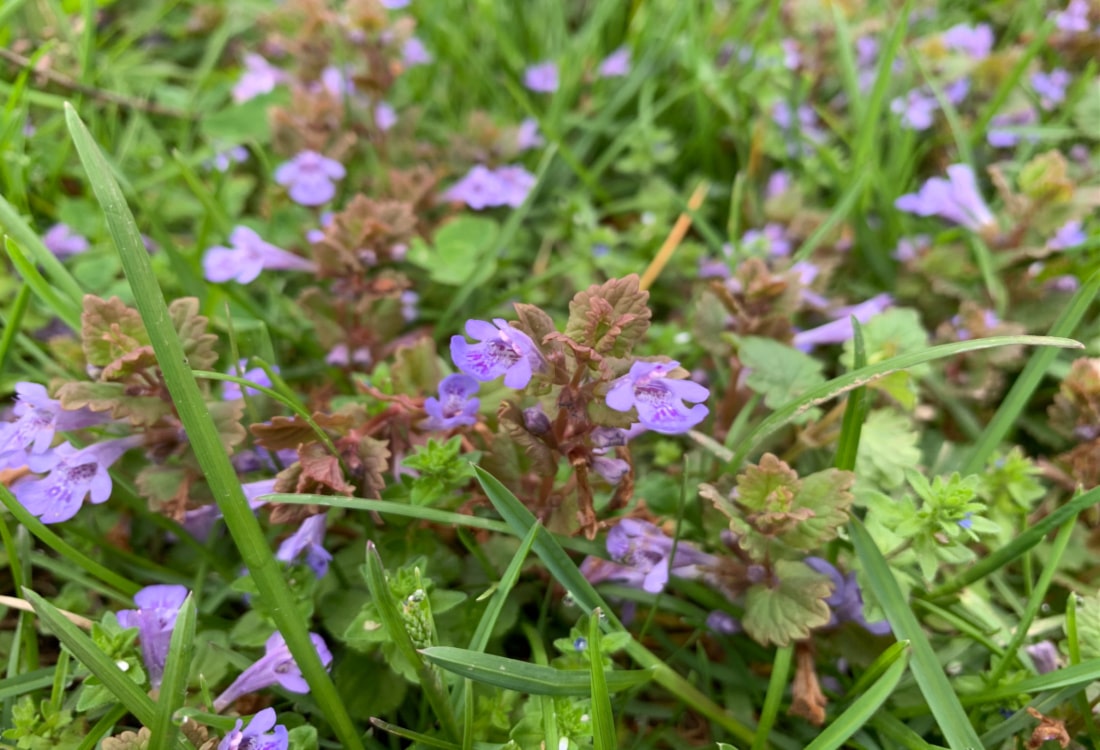
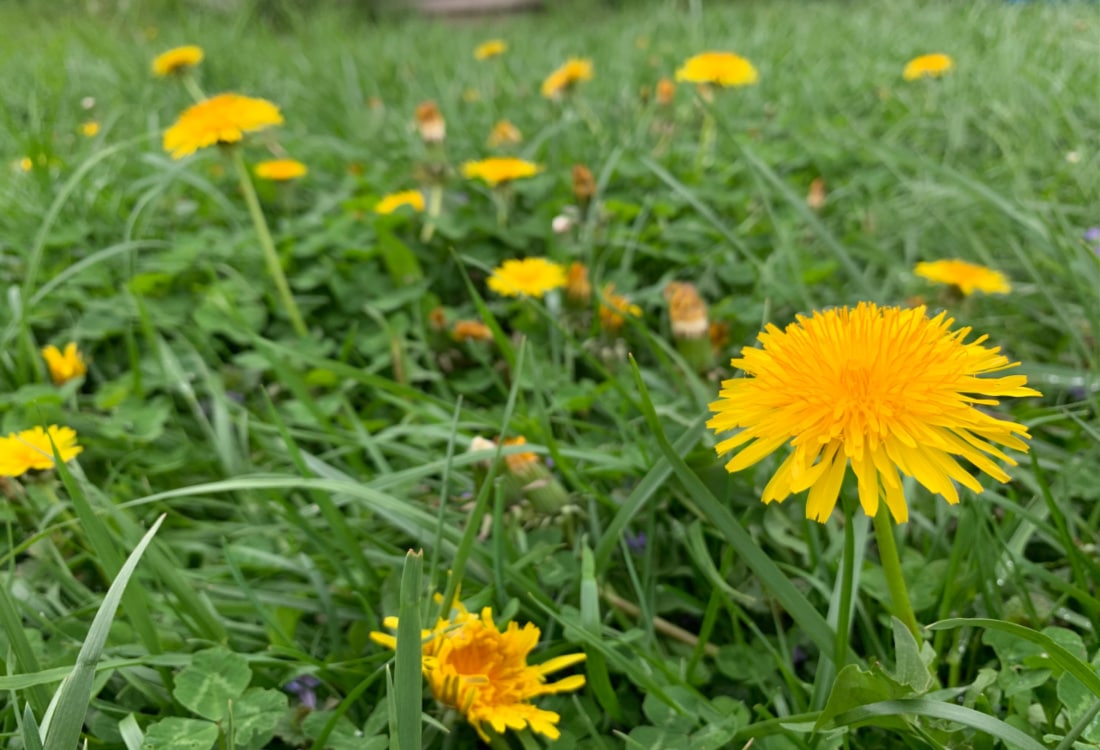
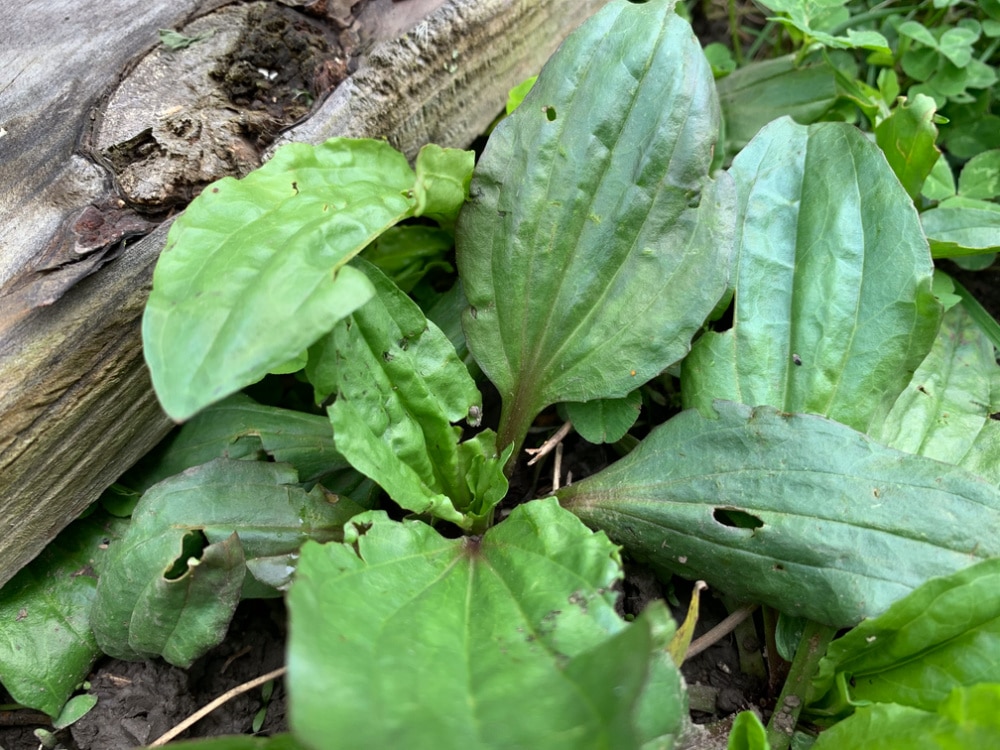
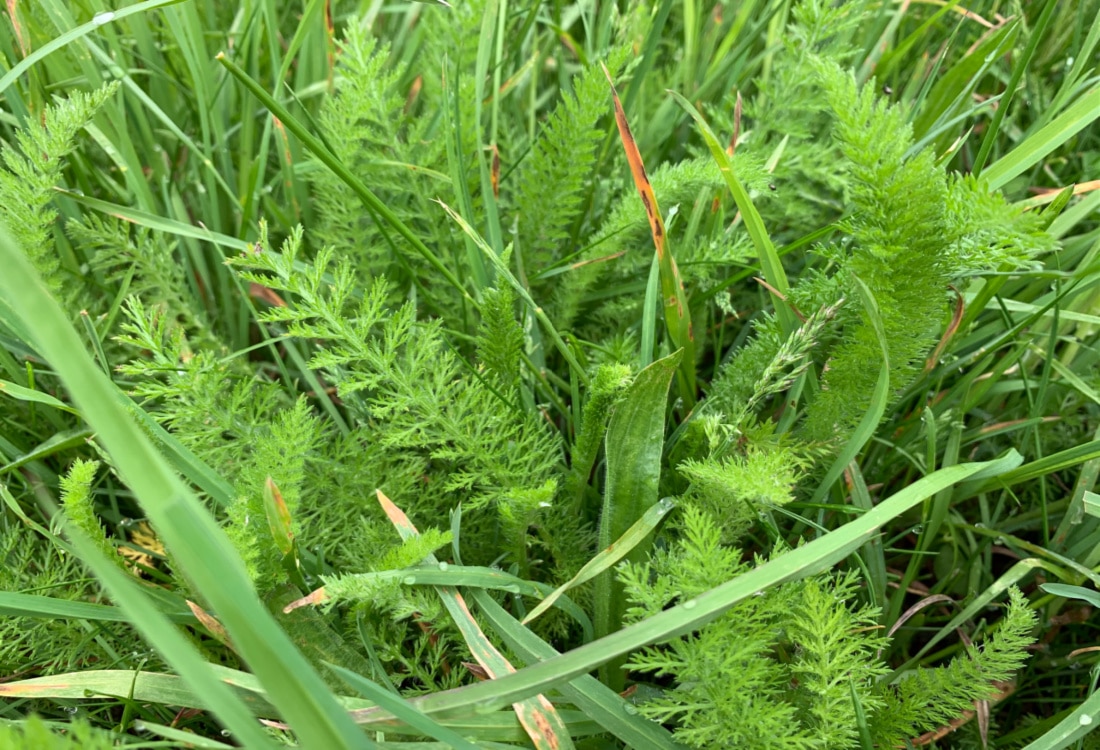

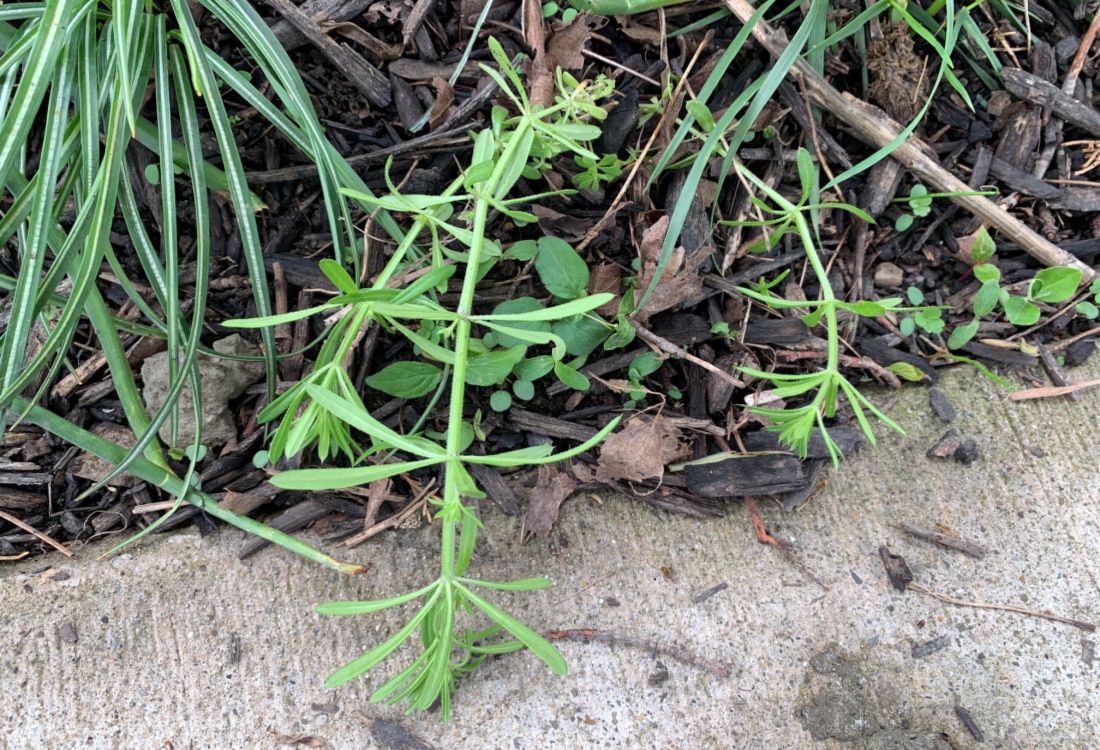
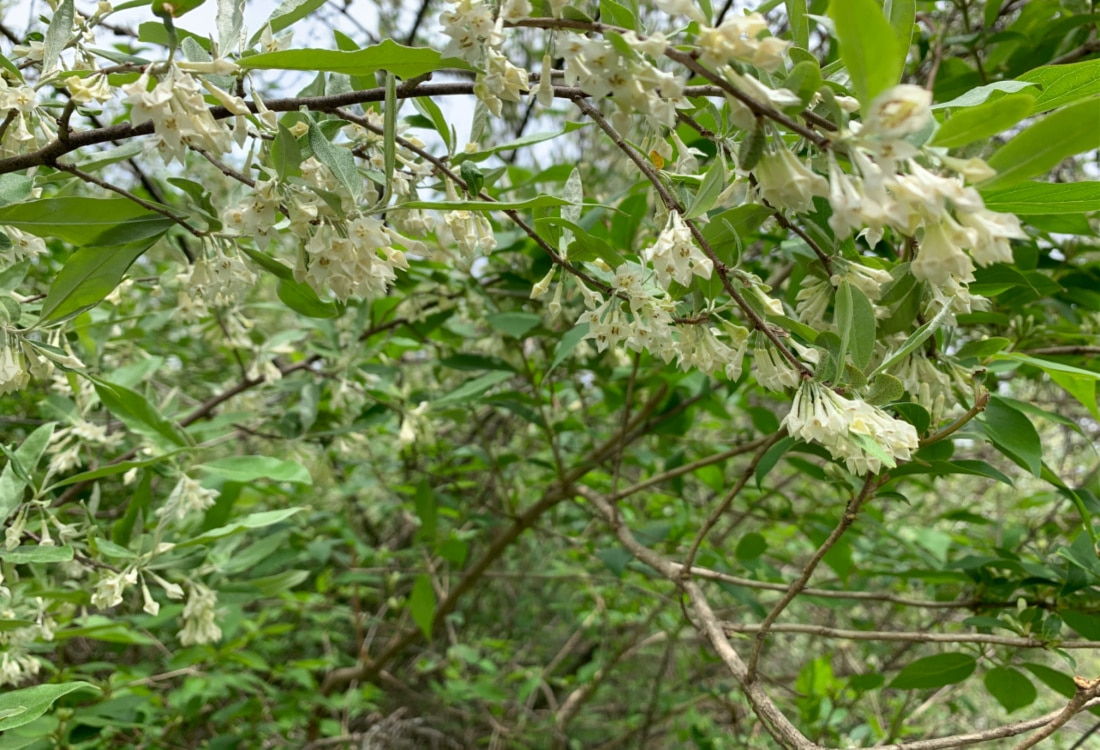

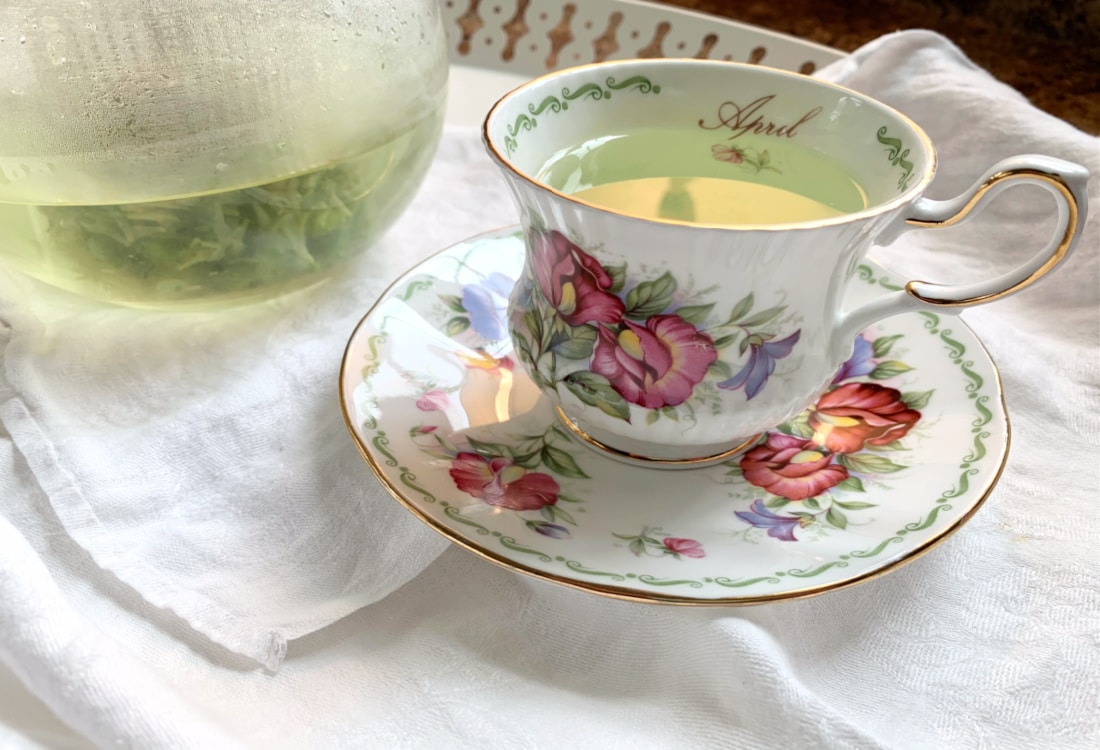

This is great! I am not sure that all of those plants grow in our area but I am a big fan of dandelions, nettles, cleavers, and plantains! Awesome post!
Thank you so much, Anja! We’re hoping most people will be able to find at least a few of these things in their backyards! Wonderful that you’re familiar and enjoy several!:)
Great topic. I hope to grow many of these in addition to foraging. Thank you for sharing. I’m pinning for later.
God gave us herbs as medicine. It’s so interesting to learn more about them!
Yes, HE did!! Thank you for checking it out, Tonya!:)